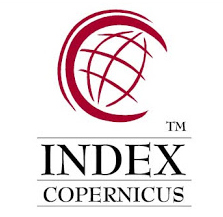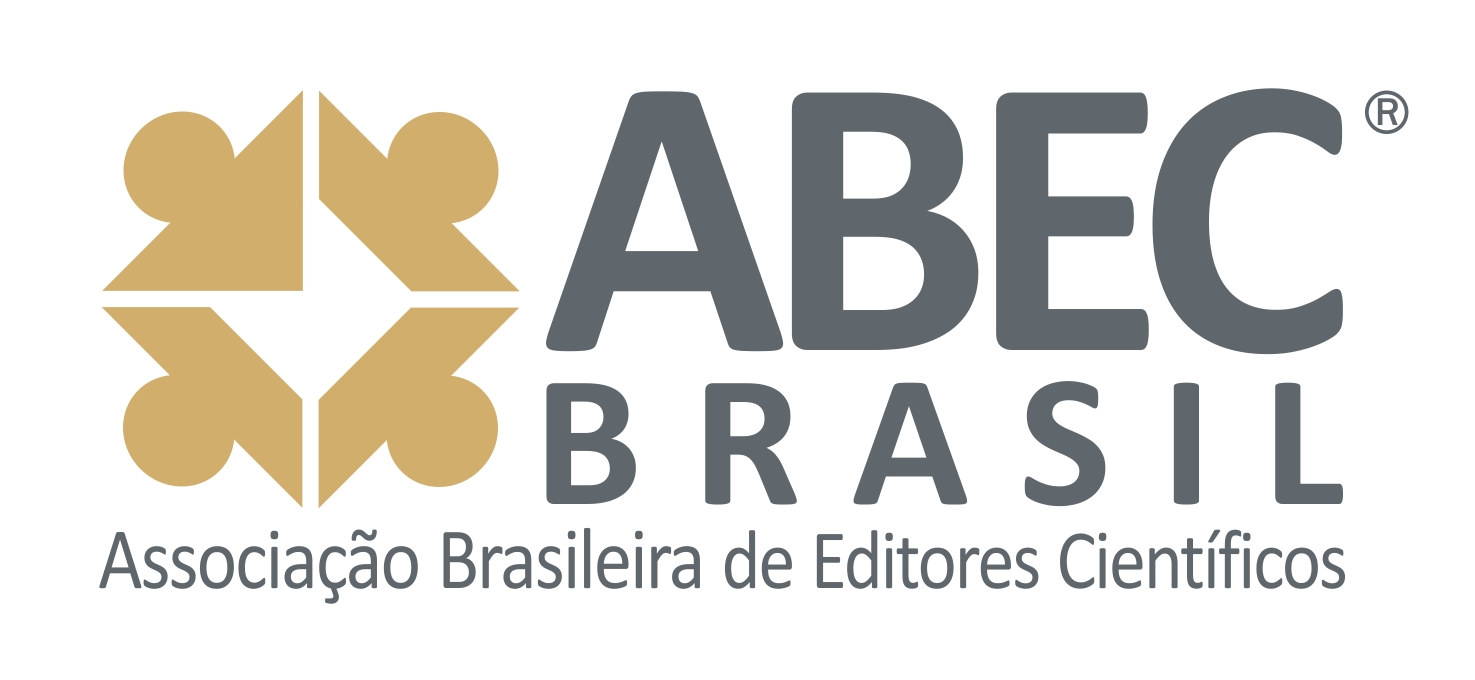Própolis, uma revisão de suas ações biológicas e benefícios para a saúde
Propolis, a review of its biological actions and health benefits
DOI:
https://doi.org/10.51473/rcmos.v1i2.2025.1702Palavras-chave:
Própolis, Atividades farmacológicas, Pesquisas.Resumo
A própolis é uma mistura de várias quantidades de cera de abelha e resinas coletadas pelas abelhas de plantas, particularmente de brotos e exsudatos resinosos. A composição da própolis varia de acordo com o tipo de abelha, origem geográfica e vegetal das amostras. A própolis é importante para a defesa da colmeia e tem sido utilizada por suas propriedades medicinais desde a antiguidade. As características biológicas da própolis dependem de sua composição química, fontes vegetais, zona geográfica e estações do ano. Mais de 300 compostos foram identificados na própolis como, compostos fenólicos, ácidos aromáticos, óleos essenciais, ceras e aminoácidos. Muitos artigos científicos são publicados todos os anos em diferentes periódicos internacionais, e vários grupos de pesquisadores têm focado sua atenção nos compostos químicos e na atividade biológica da própolis.
Downloads
Referências
AKCA, E. A. et al. The comparative evaluation of the antimicrobial effect of propolis with chlorhexidine against oral pathogens: an in vitro study. Biomed Research International, v. 2016, p. 1-8, fev. 2016.
AL-ANI, I. et al. Antimicrobial activities of European propolis collected from various geographic origins alone and in combination with antibiotics. Medicines, v. 5, n. 1, p. 1-16, 2018.
AL-HARIRI, M. Immune's-boosting agent: immunomodulation potentials of propolis. Journal of Family & Community Medicine, v. 26, n. 1, p. 57-60, jan./abr. 2019.
ALMEIDA, E. C.; MENEZES, H. Anti-inflammatory activity of propolis extracts: a review. Journal of Venomous Animals and Toxins, v. 8, n. 2, p. 13-21, maio 2002.
ALYANE, M. et al. Cardioprotective effects and mechanism of action of polyphenols extracted from propolis against doxorubicin toxicity. Pakistan Journal of Pharmaceutical Sciences, v. 21, n. 3, p. 201-209, jul. 2008.
ANJUM, S. I. et al. Composition and functional properties of propolis (bee glue): a review. Saudi Journal of Biological Sciences, v. 26, n. 7, p. 1695-1703, nov. 2019.
BANSKOTA, A. H. et al. Cytotoxic, hepatoprotective and free radical scavenging effects of propolis from Brazil, Peru, the Netherlands and China. Journal of Ethnopharmacology, v. 72, n. 1-2, p. 239-240, set. 2000.
BANSKOTA, A. H. et al. Hepatoprotective and anti-Helicobacter pylori activities of constituents from Brazilian propolis. Phytomedicine, v. 8, n. 1, p. 16-23, jan. 2001.
BARREIRAS, D. G. et al. Eficácia da ação antimicrobiana do extrato de própolis de abelha jataí (Tetragonisca angustula) em bactérias Gram-positivas e Gram-negativas. Caderno de Ciências Agrárias, v. 12, p. 1-5, 2020.
BASTOS, E. M. A. F.; SANTANA, R. A.; CALAÇA-COSTA, A. G. F.; THIAGO, P. S. Interaction between Apis mellifera L. and Baccharis dracunculifolia DC that favors green propolis production in Minas Gerais. Brazilian Journal of Biology, v. 71, n. 3, p. 727-734, ago. 2011.
BHAKUNI, G. S. et al. Animal models of hepatotoxicity. Inflammation Research, v. 65, n. 1, p. 13-24, jan. 2016.
BIESALSKI, H. K. et al. Bioactive compounds: definition and assessment of activity. Nutrition, v. 25, n. 11, p. 1202–1205, nov./dez. 2009.
BREYER, H. F. E.; BREYER, E. D. H.; CELLA, I. Produção e beneficiamento da própolis. Florianópolis: Epagri, 2016. 21 p.
BUENO-SILVA, B. et al. The effect of seasons on Brazilian red propolis and its botanical source: chemical composition and bacterial activity. Natural Product Research, v. 31, n. 11, p. 1318-1324, jun. 2017.
CASTALDO, S.; CAPASSO, F. Propolis, an old remedy used in modern medicine. Fitoterapia, n. 73, supl. 1, p. S1-S6, nov. 2002.
CHAN, G. C. F.; CHEUNG, K. W.; SZE, D. M. Y. The immunomodulatory and anticancer properties of propolis. Clinical Reviews in Allergy & Immunology, v. 44, n. 3, p. 262–273, jun. 2013.
CUESTA-RUBIO, O. et al. Polyisoprenylated benzophenones in Cuban propolis; biological activity of nemorosone. Zeitschrift für Naturforschung, v. 57, n. 3-4, p. 372-378, mar./abr. 2002.
DE LUCA, M. P. et al. The anti-caries activity and toxicity of an experimental propolis-containing varnish. Brazilian Oral Research, v. 31, p. e45, mar. 2017.
DELAPLANE, K. S. Honey Bees and Beekeeping. Georgia (US): U.S. Department of Agriculture, 2010.
DIDARAS, N. A. et al. Antimicrobial activity of bee-collected pollen and beebread: state of the art and future perspectives. Antibiotics, v. 9, n. 11, p. 811, nov. 2020.
EL-GUENDOUZ, S. et al. Antioxidant and diuretic activity of co-administration of Capparis spinosa honey and propolis in comparison to furosemide. Asian Pacific Journal of Tropical Medicine, v. 10, n. 10, p. 974-980, out. 2017.
FERREIRA, J. M. et al. New propolis type from north-east Brazil: chemical composition, antioxidant activity and botanical origin. Journal of the Science of Food and Agriculture, v. 97, n. 11, p. 3552-3558, ago. 2017.
FISCHER, G. et al. Imunomodulação pela própolis. Arquivos do Instituto Biológico, v. 75, n. 2, p. 247-253, abr./jun. 2008.
FRANCHIN, M. et al. Vestitol isolated from Brazilian red propolis inhibits neutrophils migration in the inflammatory process: elucidation of the mechanism of action. Journal of Natural Products, v. 79, n. 4, p. 954–960, abr. 2016.
GIMÉNEZ-CASSINA, B. et al. Phytochemical markers of different types of red propolis. Food Chemistry, v. 146, p. 174-180, mar. 2014.
GÓMEZ-CARAVACA, A. et al. Advances in the analysis of phenolic compounds in products derived from bees. Journal of Pharmaceutical and Biomedical Analysis, v. 41, n. 4, p. 1220–1234, jun. 2006.
HUANG, S. et al. Recent advances in the chemical composition of propolis. Molecules, v. 19, n. 12, p. 19610–19632, nov. 2014.
HUANG, S. S. et al. Antiarrhythmic effect of caffeic acid phenethyl ester (CAPE) on myocardial ischemia/reperfusion injury in rats. Clinical Biochemistry, v. 38, n. 10, out. 2005.
HUSSAIN, A. I. et al. Seasonal variation in content, chemical composition and antimicrobial and cytotoxic activities of essential oils from four Mentha species. Journal of the Science of Food and Agriculture, v. 90, n. 11, p. 1827-1836, ago. 2010.
KAISEROVÁ, H. et al. Flavonoids as protectors against doxorubicin cardiotoxicity: role of iron chelation, antioxidant activity and inhibition of carbonyl reductase. Biochimica et Biophysica Acta – Molecular Basis of Disease, v. 1771, n. 9, p. 1065-1074, set. 2007.
KOMERICKI, P.; KRÄNKE, B. Maculopapular exanthem from propolis: case report and review of systemic cutaneous and non-cutaneous reactions. Contact Dermatitis, v. 61, n. 6, p. 353–355, dez. 2009.
KRÓL, W. et al. Propolis: properties, application, and its potential. Evidence-Based Complementary and Alternative Medicine, v. 2013, 807578, 2013.
KUROPATNICKI, A. K.; SZLISZKA, E.; KROL, W. Historical aspects of propolis research in modern times. Evidence-Based Complementary and Alternative Medicine, v. 2013, 964149, abr. 2013.
KÜÇÜK, M. et al. Biological activities and chemical composition of three honeys of different types from Anatolia. Food Chemistry, v. 100, n. 2, p. 526–534, jun. 2007.
LABSKÁ, K. et al. Antiviral activity of propolis special extract GH 2002 against Varicella zoster virus in vitro. Pharmazie, v. 73, n. 12, p. 733-736, dez. 2018.
LEWIS, C. T.; SHORT, C. Oxford Latin Dictionary. 2. ed. Oxford: Oxford University Press, 2012.
LOTFY, M. Biological activity of bee propolis in health and disease. Asian Pacific Journal of Cancer Prevention, v. 7, n. 1, p. 22–31, jan./mar. 2006.
MACHADO, B. et al. Propolis as an alternative in prevention and control of dental cavity. Journal of Apitherapy, v. 1, n. 2, p. 47-50, dez. 2016.
MARIN, F. et al. Changes in nutraceutical composition of lemon juices according to different industrial extraction systems. Food Chemistry, v. 78, n. 3, p. 319–324, ago. 2002.
MARTINOTTI, S.; RANZATO, E. Propolis: a new frontier for wound healing? Burns Trauma, v. 3, n. 9, p. 1-12, jul. 2015.
NICHITOI, M. M. et al. Polyphenolics profile effects upon the antioxidant and antimicrobial activity of propolis extracts. Scientific Reports, v. 11, p. 20113, nov. 2021.
NOLKEMPER, S. et al. Mechanism of herpes simplex virus type 2 suppression by propolis extracts. Phytomedicine, v. 17, n. 2, p. 132-138, fev. 2009.
ORSI, R. O. et al. Susceptibility profile of Salmonella against the antibacterial activity of propolis produced in two regions of Brazil. Journal of Venomous Animals and Toxins including Tropical Diseases, v. 11, n. 2, p. 109-116, jun. 2005.
PARK, S. G. et al. Evaluation of anti-allergic properties of caffeic acid phenethyl ester in a murine model of systemic anaphylaxis. Toxicology and Applied Pharmacology, v. 226, n. 1, p. 22-29, jan. 2008.
PAROLIA, A. et al. Propolis and its potential uses in oral health. International Journal of Medicine and Medical Sciences, v. 2, n. 7, p. 210-215, jul. 2010.
PICCINELLI, A. L. et al. Cuban and Brazilian red propolis: botanical origin and comparative analysis by HPLC-PDA/ESI-MS/MS. Journal of Agricultural and Food Chemistry, v. 59, n. 12, p. 6484-6491, jun. 2011.
POBIEGA, K. et al. Comparison of the antimicrobial activity of propolis extracts obtained by means of various extraction methods. Journal of Food Science and Technology, v. 56, n. 12, p. 5386–5395, dez. 2019.
POPOVA, M. P. et al. Terpenes with antimicrobial activity from Cretan propolis. Phytochemistry, v. 70, n. 10, p. 1262-1271, jul. 2009.
RAO, P. V.; KRISHNAN, K. T.; SALLEH, N.; GAN, S. Biological and therapeutic effects of honey produced by honey bees and stingless bees: a comparative review. Revista Brasileira de Farmacognosia, v. 26, n. 5, p. 657–664, set./out. 2016.
REGUEIRA NETO, M. S. et al. Seasonal variation of Brazilian red propolis: antibacterial activity, synergistic effect and phytochemical screening. Food and Chemical Toxicology, v. 107, p. 572-580, set. 2017.
SALATINO, A. et al. Propolis research and the chemistry of plant products. Natural Product Reports, v. 28, n. 5, p. 925-936, maio 2011.
SALOMÃO, K. et al. Brazilian green propolis: effects in vitro and in vivo on Trypanosoma cruzi. Evidence-Based Complementary and Alternative Medicine, v. 2011, n. 2011, 185918, fev. 2011.
SCHNITZLER, P. et al. Antiviral activity and mode of action of propolis extracts and selected compounds. Phytotherapy Research, v. 24, supl. 1, p. S20-S28, jan. 2009.
SFORCIN, J. M. et al. Seasonal effect on Brazilian propolis antibacterial activity. Journal of Ethnopharmacology, v. 73, n. 1-2, p. 243-249, nov. 2016.
SFORCIN, J. M. Propolis and the immune system: a review. Journal of Ethnopharmacology, v. 113, n. 1, ago. 2007.
SHARIFI-RAD, M. et al. Lifestyle, oxidative stress, and antioxidants: back and forth in the pathophysiology of chronic diseases. Frontiers in Physiology, v. 11, jul. 2020.
SHIMIZU, T. et al. Anti-influenza virus activity of propolis in vitro and its efficacy against influenza infection in mice. Antiviral Chemistry & Chemotherapy, v. 19, n. 1, p. 7-13, mar. 2008.
SIHERI, W. et al. The chemical and biological properties of propolis. In: ALVAREZ-SUAREZ, J. (ed.). Bee products – chemical and biological properties. New York: Springer, 2017.
SOUZA, E. A. et al. Effects of seasonal variations and collection methods on the mineral composition of propolis from Apis mellifera Linnaeus beehives. Brazilian Journal of Biology, v. 76, n. 2, p. 396-401, jun. 2016.
SOUZA, F. B. R.; FISCHER, G.; VARGAS, G. D. Efeito antimicrobiano da própolis contra agentes infecciosos de interesse veterinário. Science and Animal Health, v. 1, n. 1, p. 24-37, jul./dez. 2013.
SUNG, S. H. et al. External use of propolis for oral, skin, and genital diseases: a systematic review and meta-analysis. Evidence-Based Complementary and Alternative Medicine, v. 2017, e8025752, fev. 2017.
TORETI, V. C. et al. Recent progress of propolis for its biological and chemical compositions and its botanical origin. Evidence-Based Complementary and Alternative Medicine, v. 2013, e697390, abr. 2013.
VALENCIA, D. et al. Seasonal effects on chemical composition and biological activities of Sonoran propolis. Food Chemistry, v. 131, n. 2, p. 645-651, mar. 2012.
VECCHI, E.; DRAGO, L. Propolis' antimicrobial activity: what's new? Le Infezioni in Medicina, v. 15, n. 1, p. 7-15, mar. 2007.
VEIGA, R. S. et al. Artepillin C and phenolic compounds responsible for antimicrobial and antioxidant activity of green propolis and Baccharis dracunculifolia DC. Journal of Applied Microbiology, v. 122, n. 4, p. 911-920, abr. 2017.
VOLPI, N. Separation of flavonoids and phenolic acids from propolis by capillary zone electrophoresis. Electrophoresis, v. 25, n. 12, p. 1872–1878, jun. 2004.
WAGH, V. D. Propolis: a wonder bees product and its pharmacological potentials. Advances in Pharmacological and Pharmaceutical Sciences, v. 2013, e308249, dez. 2013.
WANG, H. X. et al. Immune mechanisms of Concanavalin A model of autoimmune hepatitis. World Journal of Gastroenterology, v. 18, n. 2, p. 119-125, jan. 2012.
WATANABE, M. A. E. et al. Cytotoxic constituents of propolis inducing anticancer effects: a review. The Journal of Pharmacy and Pharmacology, v. 63, n. 11, p. 1378–1386, nov. 2011.
WILLIAMS, C. D. et al. Mouse strain-dependent caspase activation during acetaminophen hepatotoxicity does not result in apoptosis or modulation of inflammation. Toxicology and Applied Pharmacology, v. 257, n. 3, p. 449-458, dez. 2011.
WOO, K. J. et al. Chrysin suppresses lipopolysaccharide-induced cyclooxygenase-2 expression through the inhibition of nuclear factor for IL-6 (NF-IL6) DNA-binding activity. FEBS Letters, v. 579, n. 3, p. 705-711, jan. 2005.
XUAN, H. et al. Anti-inflammatory effects of Chinese propolis in lipopolysaccharide-stimulated human umbilical vein endothelial cells by suppressing autophagy and MAPK/NF-κB signaling pathway. Inflammopharmacology, v. 27, p. 561-571, jan. 2019.
YE, M. et al. Alterations in the transcriptional profile of the liver tissue and the therapeutic effects of propolis extracts in alcohol-induced steatosis in rats. Anais da Academia Brasileira de Ciências, v. 91, n. 3, e20180646, ago. 2019.
YINKANG, L. et al. Galangin and pinocembrin from propolis ameliorate insulin resistance in HepG2 cells via regulating Akt/mTOR signaling. Evidence-Based Complementary and Alternative Medicine, v. 2018, p. 7971842, out. 2018.
YOSEFI, S. et al. Chrysin-enhanced cytotoxicity of 5-fluorouracil-based chemotherapy for colorectal cancer in mice: investigating its effects on cyclooxygenase-2 expression. Brazilian Journal of Pharmaceutical Sciences, v. 58, e19381, 2022.
ZABAIOU, N. et al. Biological properties of propolis extracts: something new from an ancient product. Chemistry and Physics of Lipids, v. 207, p. 214-222, out. 2017.
Downloads
Publicado
Edição
Seção
Categorias
Licença
Copyright (c) 2025 Edson Geronimo, Daniela de Cassia Faglioni Boleta Ceranto, Emerson Luiz Botelho Lourenço, Ezilda Jacomassi, Rosinéia Aparecida Vilela Cebrian, Simony Rodrigues Bernardelli Rosa, Eliane Mendes Franco, Juliana Cogo, João Vitor Barbosa do Carmo, Giuliana Zardeto (Autor)

Este trabalho está licenciado sob uma licença Creative Commons Attribution 4.0 International License.
Este trabalho está licenciado sob a Licença Creative Commons Atribuição 4.0 Internacional (CC BY 4.0). Isso significa que você tem a liberdade de:
- Compartilhar — copiar e redistribuir o material em qualquer meio ou formato.
- Adaptar — remixar, transformar e construir sobre o material para qualquer propósito, inclusive comercial.
O uso deste material está condicionado à atribuição apropriada ao(s) autor(es) original(is), fornecendo um link para a licença, e indicando se foram feitas alterações. A licença não exige permissão do autor ou da editora, desde que seguidas estas condições.
A logomarca da licença Creative Commons é exibida de maneira permanente no rodapé da revista.
Os direitos autorais do manuscrito podem ser retidos pelos autores sem restrições e solicitados a qualquer momento, mesmo após a publicação na revista.













